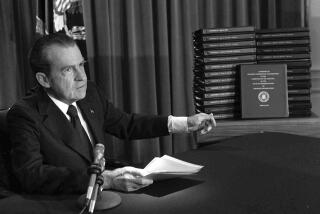Unbalanced on budgets

New budget proposals this week from influential members of the House Republican and Senate Democratic leadership are the stuff of political caricatures. House Budget Committee Chairman Paul D. Ryan (R-Wis.), last year’s Republican nominee for vice president, reprised the spending-cut talking points from his failed campaign with little change and no apparent irony. Senate Budget Committee Chairwoman Patty Murray (D-Wash.), meanwhile, offered the outlines of a budget that increases taxes and spending, while doing little more than buying time on the entitlement programs at the heart of Washington’s long-term problems. Neither approach offers a realistic way forward. Instead, they give Republicans and Democrats yet another arena in which to fight their ideological battles over the size and scope of government.
The spending blueprint Ryan released Tuesday would balance the federal budget by 2023, relying in part on the tax increases and Medicare savings that Democrats championed but Ryan railed against on the campaign trail last year. It also recycles proposals to “strengthen” Medicaid, food stamps and Medicare by capping federal spending on them and giving recipients more flexibility. Promoting innovation in those programs would be welcome, but Ryan’s budget would cut costs at the expense of maintaining the federal safety net and Medicare’s guarantee of affordable coverage for all seniors.
Murray’s proposal, which will be formally released Wednesday, has a less ambitious goal. It seeks to bring down the deficit over the coming decade so that the federal debt won’t grow faster than the economy. That’s a fine target for the near term. Unlike Ryan’s budget, however, Murray’s plan wouldn’t necessarily stop the deficit from growing rapidly again in later years as Medicare rolls expand and the cost of medical care increases. Meanwhile, she would provide $100 billion in new stimulus spending and replace the across-the-board “sequester” cuts with $1.95 trillion worth of tax hikes, unspecified reductions in entitlements and smaller reductions in discretionary programs.
In short, the proposals play to the polarized extremes of each party. To Ryan, cutting spending is crucial to reviving the economy; to Murray, the key is pouring federal dollars into infrastructure projects and job training. Ryan’s budget would simplify the tax code in order to cut tax rates; Murray’s would do so to raise revenue by almost $1 trillion over the coming decade. If these ideas sound familiar, they should — they were repeated ad infinitum during last year’s campaign. At some point, lawmakers will have to step out of their ideological comfort zones and find a path they can walk together. That day can’t come soon enough.
More to Read
A cure for the common opinion
Get thought-provoking perspectives with our weekly newsletter.
You may occasionally receive promotional content from the Los Angeles Times.










